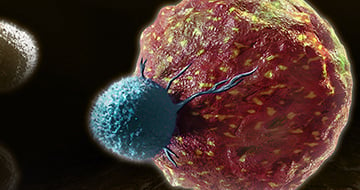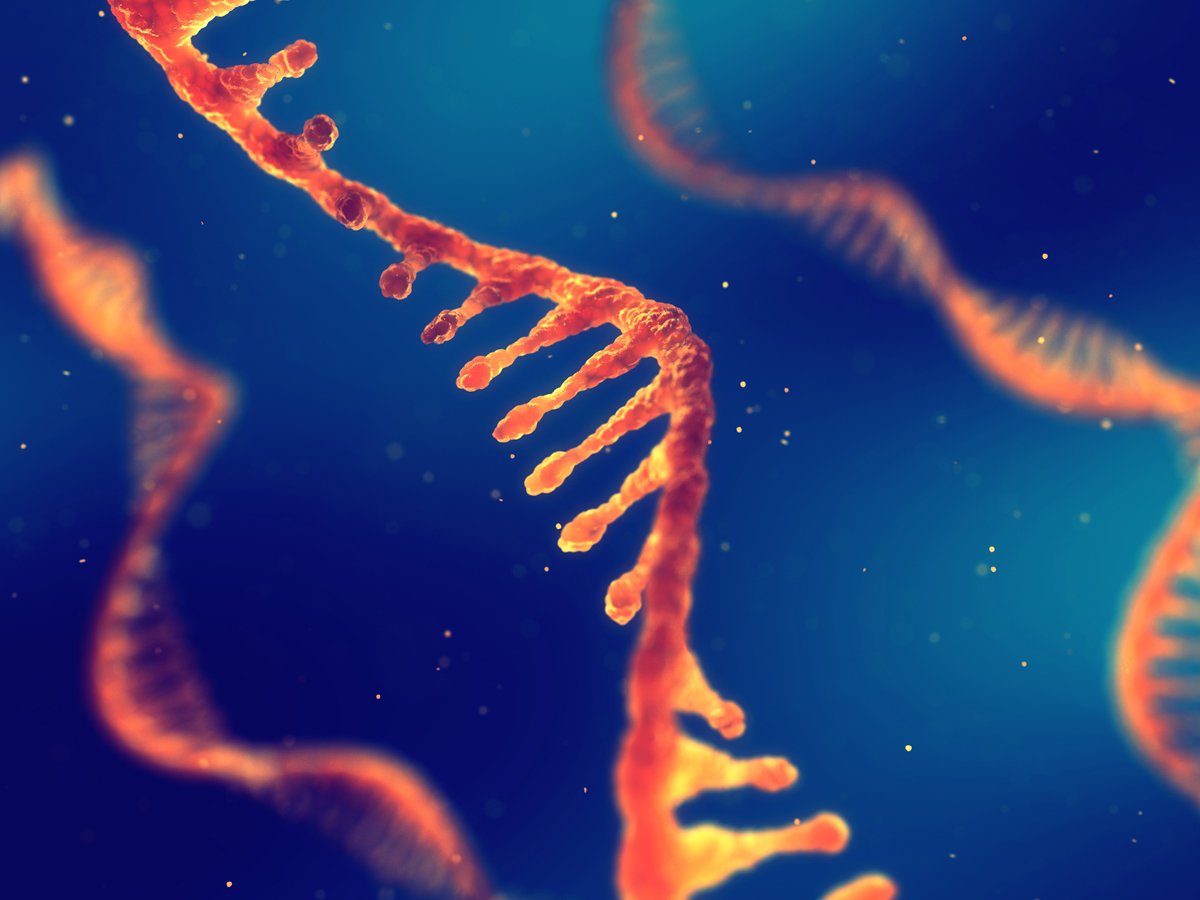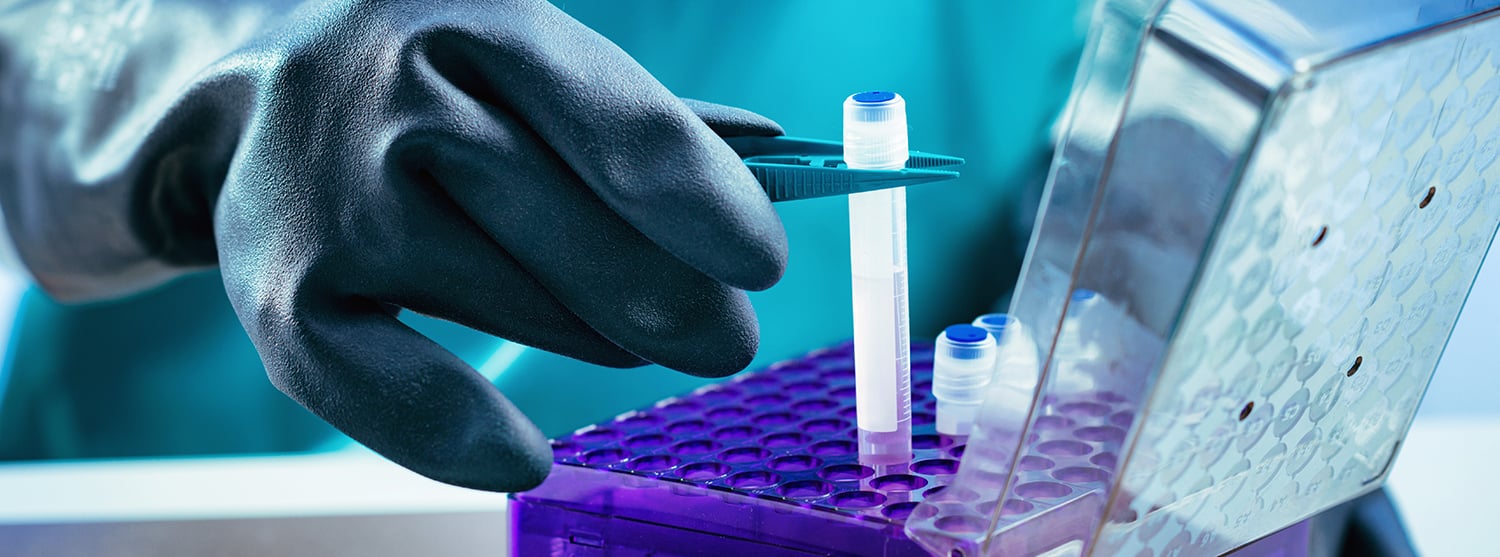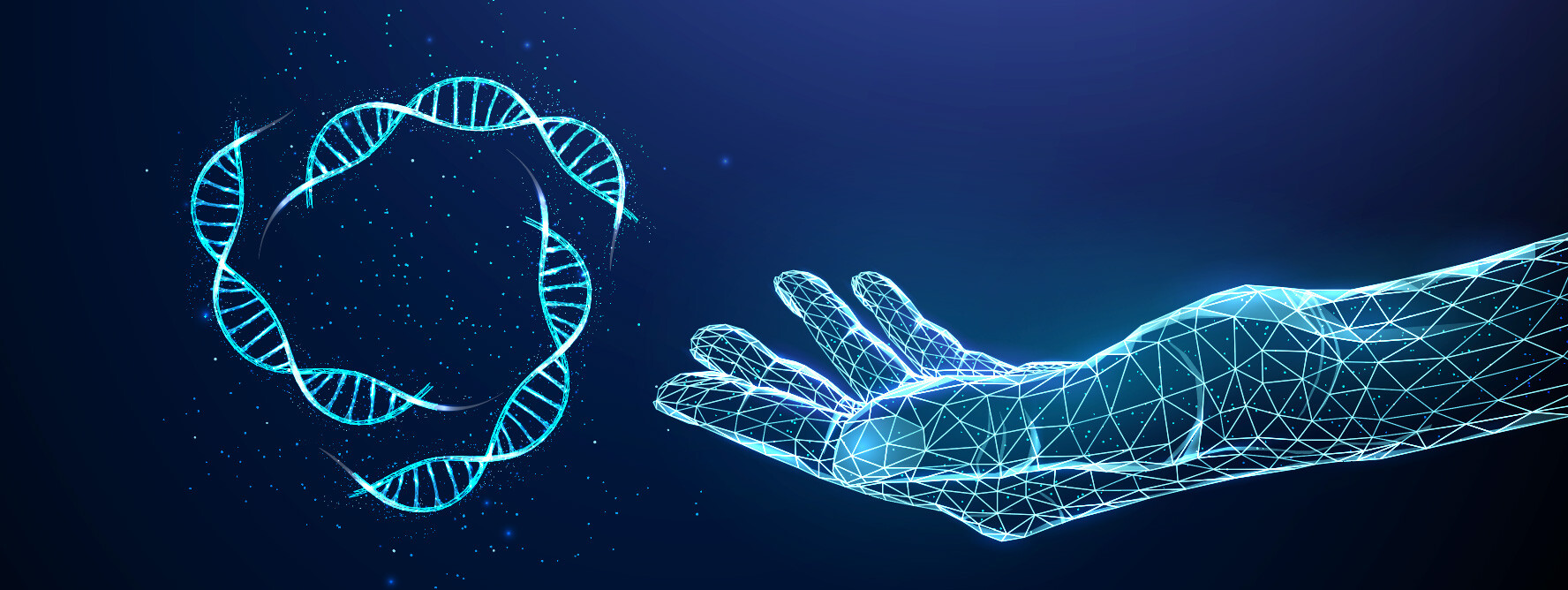The rapid increase of precision oncology approaches in recent years has been fueled in part by technological innovations and an increased interest in personalized therapies. Precision medicine approaches rely on biomarkers to define optimal treatment strategies and also play important roles in the diagnosis of disease, treatment efficacy assessment, and/or disease progression.
Gene expression studies are a useful tool to identify biomarkers used to diagnose cancer and predict treatment efficacy and disease prognosis. The recent rise of high-throughput technologies that generate large-scale molecular measurements has accelerated gene expression biomarker development. In particular, transcriptomics is a powerful approach for biomarker discovery because it profiles the entire set of RNA transcripts produced by a genome.
This post helps you choose the right transcriptomic technology for your mRNA profiling studies, focusing on the main steps, advantages, and disadvantages of RNA-seq and the NanoString platform, with a short review of other available technologies.
RNA Sequencing (RNA-seq)
RNAseq directly sequences and quantifies the number of mRNA molecules in the entire transcriptome. This technique is relevant to a wide range of applications, including identifying changes in gene expression associated with a specific disease state. For instance, profiling cancers with RNA-seq provides key insights regarding tumor classification and progression by identifying variants expressed in different samples.
The Main Stages of RNA-seq
There are four main steps in RNA-seq which cover:
- mRNA transcript fragmentation, followed by random primer binding to mRNA segments
- Generation of double-stranded DNA from first- and second-strand cDNA synthesis via reverse transcription of the mRNA fragment
- Tagging of the ends of the fragments with a phosphate group and poly(A) tail
- Ligation of adaptors onto the cDNA fragments, which enables downstream PCR amplification and sequencing.
It’s key to understand the main advantages and disadvantages of RNA-seq, to determine if it’s the optimal assay for your specific research needs.
Advantages of RNA-seq
- Unlike traditional hybridization-based technologies (e.g., arrays), RNA-seq does not require specific probes (i.e., species- or transcript-specific probes). This makes it a powerful tool for detecting novel transcripts, gene fusions, single nucleotide variants, indels (small insertions and deletions), and other changes that arrays are not able to detect.
- Genome-wide profiling technique that can assess the approximately 26,000 genes in the human genome, rendering it a powerful tool for biomarker discovery.
- Highly sensitive and can be used to detect rare and low-abundance transcripts (e.g., weakly expressed genes, single transcripts in a cell) by simply increasing the depth of sequencing coverage.
- It enables discovery of novel complex genomic features, such as previously unknown transcriptional features, including alternative splicing, allele-specific expression, and newly transcribed regions.
Disadvantages of RNA-seq
- High-quality RNA is needed, with a suggested RNA integrity number over 8.
- Requires a minimum of 1µg total RNA, but ≥2µg is preferred, which are larger samples compared with NanoString.
- Complete removal of genomic DNA is key. Therefore, DNase treatment is necessary because amplified RNA cannot be differentiated from genomic DNA.
- Downstream analyses require experienced scientists to leverage the information to its full capacity. Processing raw data to obtain normalized gene expression can also be costly.
NanoString
NanoString Technologies, Inc. developed a technology known as “nCounter®,” a variation on DNA microarrays, that is robust, sensitive, reproducible, easy to use, and amplification free. The NanoString platform counts individual mRNA transcripts. It’s useful for many potential applications, such as studying gene regulatory pathways, diagnostics, validating gene expression experiments in disease studies, including cancer, and ultimately generating highly translatable data for clinical use.
The Main Steps using the NanoString Platform
NanoString uses two hybridization probes (each ~35–50 bases in length) per mRNA molecule. Probe pairs are generated for each unique gene. The reporter probe carries the signal. The other probe “captures” the complex, immobilizing it so that a digital analyzer can detect the hybridized reporter probes (there are four different-colored fluorophores). The probes are mixed with the RNA in solution. The digital analyzer identifies, scans, and counts the molecular barcode per sample. Notably, since the probes anneal directly to the RNA, a reverse transcription step is not required to generate cDNA.
Advantages of NanoString
- High-quality RNA is not required. It is therefore ideal for scenarios where only poor-quality RNA is available, including formalin-fixed paraffin-embedded material.
- Smaller amounts of starting material are needed compared to RNAseq: 100ng of total RNA or lysate from 10,000 cells.
- Minimal background signal.
- Amplification free.
- Reduced possibility for introducing bias.
- The NanoString platform has improved detection of low-expression RNA.
- Data analysis software is freely provided by NanoString Technologies, with readouts that are user friendly and suitable for non-specialists.
Disadvantages of NanoString
- Unsuitable for biomarker discovery, since it employs approximately 800 preselected genes that are publication based.
- Proprietary platform with limited flexibility.
Comparison of Assay Properties for Illumina MiSeq RNA-seq, NanoString nCounter, and DNA Microarray
Adapted from Narrandes and Xu. Gene Expression Detection Assay for Cancer Clinical Use. J Cancer. 2018;9(13):2249-2265.
| Illumina MiSeq RNA-seq | NanoString nCounter | DNA Microarray | |
|---|---|---|---|
| Primer/probe design | Primers on flow cell and adaptors to ligate to ends of sample |
Capture probe with 3' affinity tag and reporter probe with color-coded tag |
DNA oligo probes complementary to cDNA samples |
| Sample preparation | RNA extraction; reverse transcribed sample; fragmentation, library construction |
RNA extraction | RNA extraction; reverse transcribed sample, fragmentation |
| Instrument | MiSeq benchtop sequencer | Prep station and digital analyzer |
Microarray scanner |
| Reproducible | Yes | Yes | Yes |
| Specificity | Rely on data analysis | Design of capture and reporter probes |
Density of probes annealed to the slide, probe design |
| Sensitivity | <1 copy/cell | <1 copy/cell | 1–10 copies/cell |
| Clinical use? | Yes | Yes | Yes |
| Commercialized for clinical use |
No | Prosigna (NanoString Technologies, Inc.) |
MammaPrint |
| Number of genes or transcripts detected |
Whole transcriptome | ~800 | 50,000 |
| Up to sample # per assay |
96 | 12 | 1–12/array |
| Processing steps | cDNA lib prep, sequencing, data analysis |
Label probes, hybridization to array, Data analysis |
Label cDNAs, hybridization to array, Data analysis |
| Raw data analysis | By machine in 3 hours |
By machine in 2.7 hours |
By machine in 1 hour 40 minutes |
| Normalization | Reads per kilobase million |
Housekeeping genes; positive controls |
Housekeeping genes; robust multi-array average; LOWESS method |
| Data analysis | Data output as sequenced reads with quality scores or read alignments |
Color-coded images are taken and output as code counts |
Visualization; statistical tests |
Other Available mRNA Profiling Platforms
Several other sequencing approaches can be used for mRNA profiling, which are briefly summarized here including a list of some of the available commercial products.
3’RNA Sequencing
Here, mRNAs are not fragmented before reverse transcription, and cDNAs are reverse transcribed only from the 3′ end of the mRNAs. Therefore, only one copy of cDNA is generated for each transcript. This means that when the cDNAs are sequenced, the number of reads is a direct reflection of the number of transcripts of a specific gene.
Commercial Products: Lexogen QuantSeq, QioSeq UPX 3’ Transcriptome
Specific Targeted Sequencing
This approach targets RNA sequences by hybridization to DNA oligos followed by removing the unhybridized oligos and amplifying the remaining product.
Commercial Products: BioSpyder TempO-Seq™ , Ion Ampliseq™ Transcriptome
Traditional Microarrays
These are used to quantify a defined set of transcripts by hybridizing the RNA to an array of complementary probes (which typically correspond to the 3′ end of the gene). This technology can be used to evaluate thousands of transcripts simultaneously. Advances in fluorescence detection have increased the ability to accurately detect low-abundance transcripts.
Commercial Products: Affymetrix U133A, Illlumina BeadChip HT-12 v3/v4
Newer Microarrays
These arrays focus on 20,000+ well-annotated genes and provide a gene-level view of the transcriptome. These newer arrays consist of defined sets of probes that target characteristic exons rather than the 3’ end of a gene.
Commercial Product: Affymetrix Clariom™ S
Conclusion
Transcriptomic data can be reliably generated from different measurement platforms, with the relative merits and limitations of the RNA-seq and NanoString gene expression profiling platforms summarized here. Ultimately, the choice of platform used will depend upon the study endpoints, required resolution and coverage, throughput, sample quality, availability, and budget.

Mouse I/O RNA-Seq Panel
NGS-based murine targeted 1080-gene panel for I/O and TME studies

Genomics and Transcriptomics Services
Comprehensive solutions delivering high-quality genomics results and advanced data analysis









